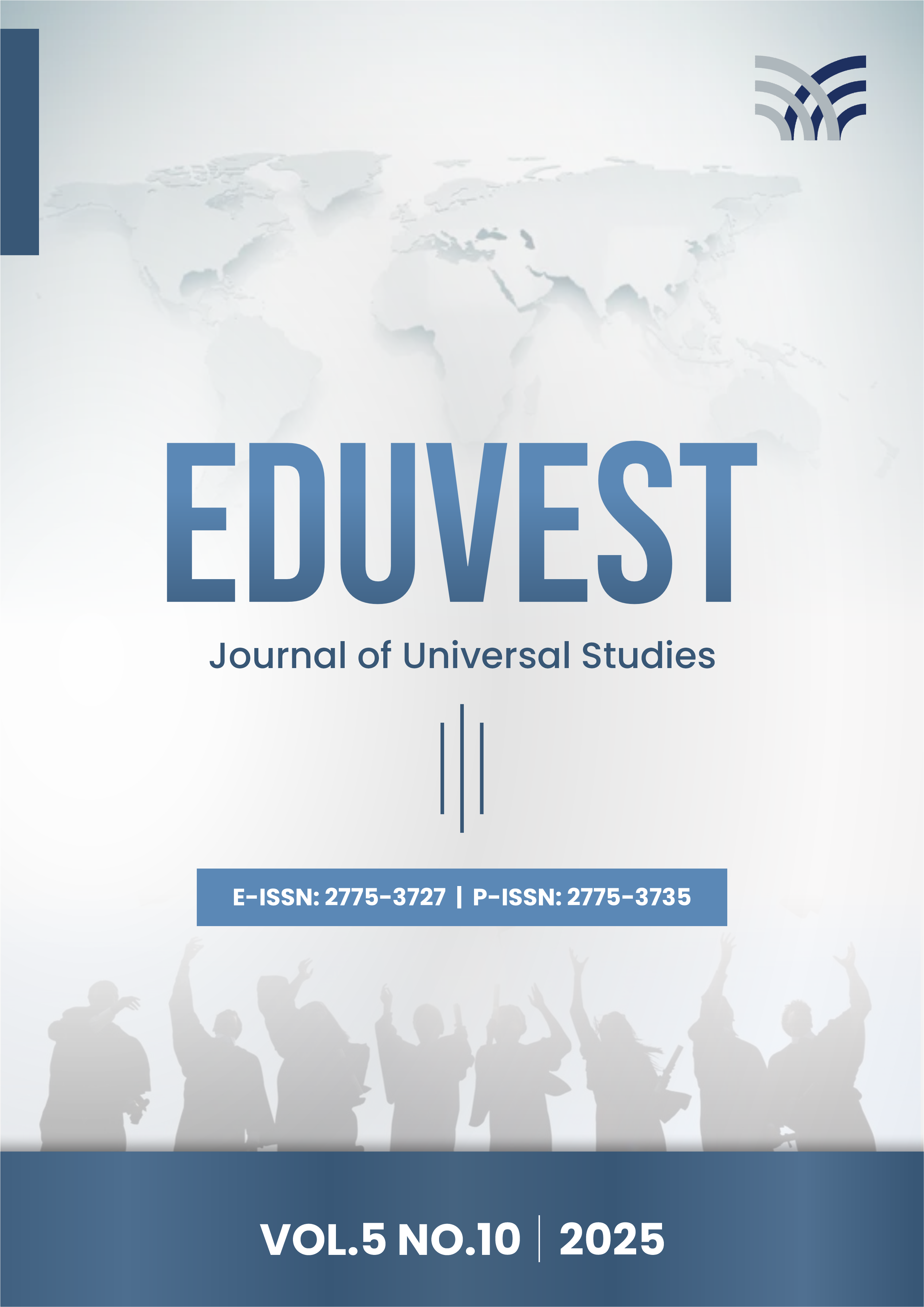Proposed Marketing Strategy for Independent Music Project: A Case Study of Dua Mata Pisau
DOI:
https://doi.org/10.59188/eduvest.v5i10.51330Keywords:
Marketing Strategy, Segmentation Process, Needs-Based Segmentation, Marketing Mix, Music Band, Indonesian Music IndustryAbstract
Dua Mata Pisau is a new independent music project from Jakarta, Indonesia, currently preparing for its first music release. The rapid growth of the music industry in the digital era presents both opportunities and challenges for independent musicians. Digitalization enables easier distribution of music through digital streaming platforms (DSPs) such as Spotify, Apple Music, and YouTube Music. However, this also increases competition, making it difficult for new musicians to gain visibility and effectively monetize their work. This study aims to assist Dua Mata Pisau in determining an appropriate marketing strategy by exploring audience-based market segmentation, identifying the most attractive target segment, and developing a positioning strategy aligned with its resources and competencies. The research utilized data and insights from key industry stakeholders—such as music producers, artist managers, and label representatives—supported by secondary data, including music consumption trends, streaming platform reports, and industry analyses. Through segmentation analysis, three primary segments were identified: Diehard Fans, Functional Users, and Aspirational Learners. By applying frameworks such as segment attractiveness assessment, market access evaluation, and value proposition analysis, the study concludes that Dua Mata Pisau should adopt a multi-segment targeting strategy. This strategy involves tailored offerings for each segment, leveraging the project's unique resources and capabilities. The strategic implementation culminates in the planned release of Dua Mata Pisau’s debut single in June 2026. The findings provide actionable insights for independent musicians seeking to professionalize their marketing approach while contributing to the academic discourse on strategic marketing in the creative industry.
References
Akil, R., Rasyidin, N., & Dwihadiah, D. L. (2024). Mediatized world in digital music industry: Transformations, challenges, and opportunities—A study in Indonesia. Daengku: Journal of Humanities and Social Sciences Innovation, 4(3), 443–449.
Anesbury, Z. W., Davies, C., Page, B., Driesener, C., Yang, S., & Bruwer, J. (2025). How heterogeneous are music genre listeners? Australasian Marketing Journal, 1–13. https://doi.org/10.1177/14413582241312930
Baym, N. K. (2018). Playing to the crowd: Musicians, audiences, and the intimate work of connection (Vol. 14). NYU Press.
Cahya, H. N., Isthika, W., Pramitasari, R., & Ingsih, K. (2025). Marketing and MSMEs dynamics in Indonesia and Malaysia: Strategies, challenges, and cultural influences. Penerbit P4I.
Darmawan, M. Y. (2020). Iwan Fals, music, and the voice of resistance. I-Pop: International Journal of Indonesian Popular Culture and Communication, 1(1), 41–62.
Fehér, K. (2017). Prospects of creative industries and digital economy: Perspectives from Southeast Asia and Central Europe.
Finoti, L. L., Toaldo, A. M. M., Schwarzbach, L. C., & Marchetti, R. Z. (2019). Marketing strategy process: Analyzing the sequential relationships among its strategic activities. Revista Brasileira de Gestão de Negócios, 21(4), 767–786. https://doi.org/10.7819/rbgn.v21i5.4031
Friedman, N., & Tech, C. (2025). Understanding the challenges of maker entrepreneurship. Proceedings of the ACM on Human-Computer Interaction, 9(2), 1–29. https://doi.org/10.1145/3711096
Hesmondhalgh, D. (2019). The cultural industries. Москва: Издательский дом Высшей школы экономики.
Hicks, W. R. (2023). Successful digital marketing strategies of independent artists [Doctoral dissertation, Walden University].
Ikhsano, A., Stellarosa, Y., & Ramonita, L. (2024). Digital communication in music industry: An analysis of Instagram management in Indonesia and Southeast Asia. Jurnal Komunikasi: Malaysian Journal of Communication, 40(4), 521–538.
Kleinberg, J. (2022). The challenge of understanding what users want: Inconsistent preferences and engagement optimization. arXiv preprint. https://doi.org/10.48550/arXiv.2204.04509
Maguire, G. (2024). How to start a digital art business: A beginner’s guide. Garreth Maguire.
Mulligan, M. (2025). Highlights from MIDiA’s “AI futures: Culture wars” report.
Okonkwo, I., Mujinga, J., Namkoisse, E., & Francisco, A. (2023). Localization and global marketing: Adapting digital strategies for diverse audiences. Journal of Digital Marketing and Communication, 3(2), 66–80.
Porto, R. B., Borges, C. P., & Dubois, P. G. (2024). Impression management through social media: Impact on the market performance of musicians’ human brands. Journal of Product & Brand Management, 33(1), 345–356. https://doi.org/10.1108/JPBM-05-2023-4510
Ramesh, S. (2024). The economics of music streaming: Impact on artist compensation and industry structure in the digital era. Journal of Humanities, Music and Dance, 4(6), 4–11. https://doi.org/10.55529/jhmd.46.1.8
Sanseverino, D., Caputo, A., & Cortese, C. G. (2023). “Don’t stop the music,” please: The relationship between music use at work, satisfaction, and performance. Behavioral Sciences, 13(1), 1–11. https://doi.org/10.3390/bs13010015
Wu, Y., Nambisan, S., Xiao, J., & Xie, K. (2022). Consumer resource integration and service innovation in social commerce: The role of social media influencers. Journal of the Academy of Marketing Science. https://doi.org/10.1007/s11747-022-00837-y
Downloads
Published
How to Cite
Issue
Section
License
Copyright (c) 2025 Atarrahim Iqbal Putra Riyadi

This work is licensed under a Creative Commons Attribution-ShareAlike 4.0 International License.











